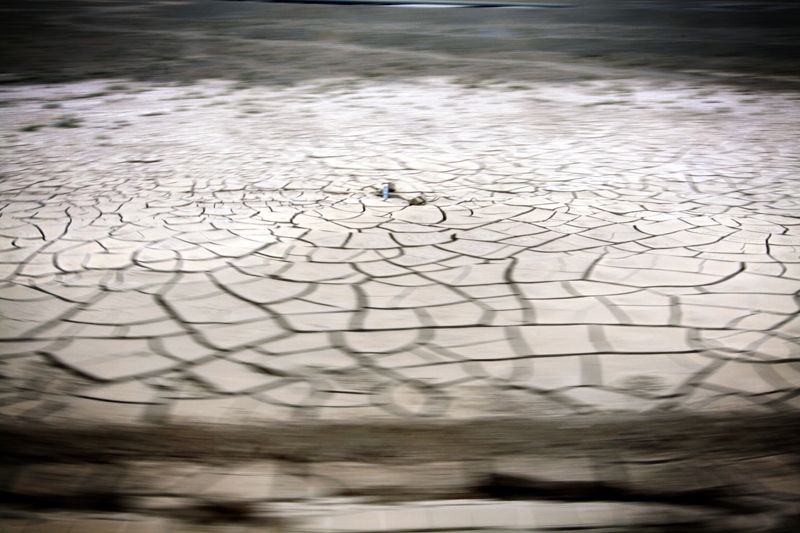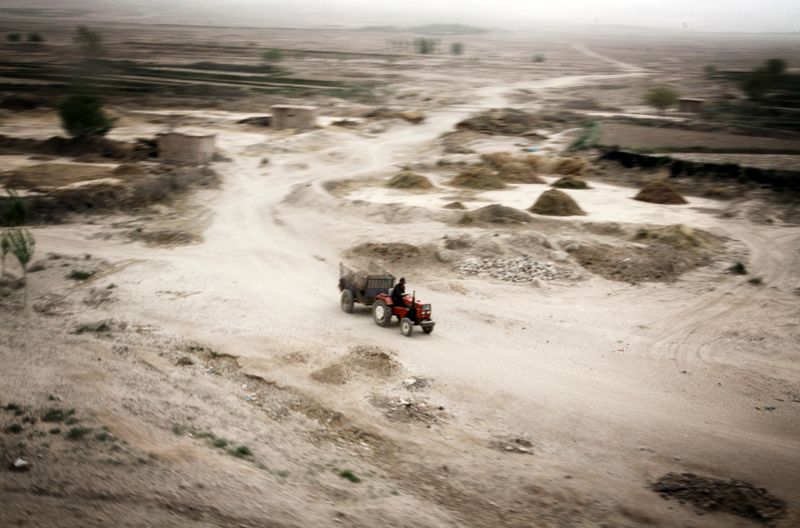Winding my way along China's network of rail lines through the northern provinces of Inner Mongolia, Ningxia, Gansu and Xinjiang, I have travelled over 4000 kilometers over the past 6 weeks, witnessing first hand the severity of desertification in China, just from my carriage window. The route I have followed, although made up of a number of trains, has been dubbed China's 'desertification train', as it snakes through some of the hardest hit land, suffering as a result of this increasingly severe phenomenon.
A dry, cracked pavement of sun-baked soil follows the train tracks. A lone farmer rides his tractor in an impoverished village. A tree is bent in the oncoming wind of a dust-storm. The remnants of the Great Wall of China disappear into the Gansu plains. These are but a few of the momentary glimpses of life witnessed rushing past my window, each another piece in the mosaic of images that I have made, in an effort to convey the current situation here in China.
The task facing China to control it's growing sands is of near-incomprehensible proportions. It is estimated that 20% of China's land area, some 1.74 million square kilometers, is now classified as desert. Affecting the lives of an estimated 400 million people, it is the most important environmental issue in China today. Desertification has no borders however and the fight is not only China's.
"Desertification is one of the most serious threats facing humanity. It is a global problem, affecting one fifth of the world's population in more than 100 countries", stated former United Nations Secretary-General Kofi Annan, in a message on World Day to Combat Desertification and Drought in 2006. "If we don't take action, current trends suggest that by 2020 an estimated 60 million people could move from desertified areas of sub-Saharan Africa towards North Africa and Europe, and that worldwide, 135 million people could be placed at risk of being uprooted."
How China handles the threat from desertification over the coming decades, may prove to be a lesson for the global community. China has all the problems and challenges associated with the issue and at the same time, has all the resources at its disposal to potentially combat the problem. Whether it will effectively do so, when demands and pressures from other sources, both environmental and political, drag attention away from this issue, remains to be seen.
Today however, as the 'desertification train' trundles through China's northern provinces, it continues to offer front-row seats to the fight the country is having with its growing sands. For the millions of people who are being affected by this crisis throughout the country, it's a fight that China desperately needs to win.







